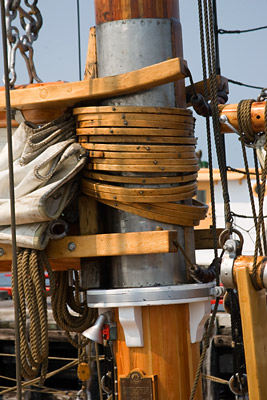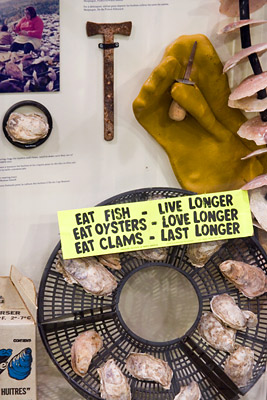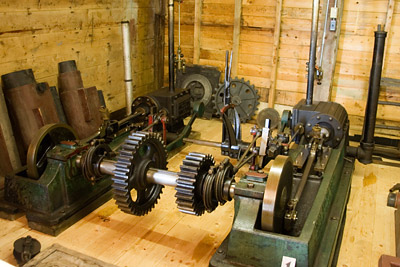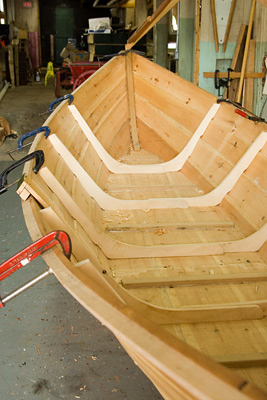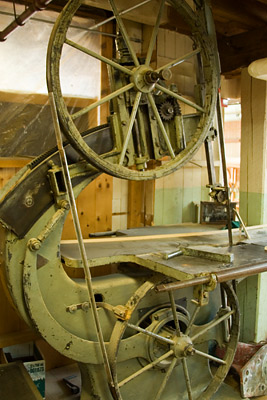Ken's Journal Halifax, Peggy's Cove and Lunenburg, Nova Scotia |
Lunenburg, Nova Scotia. The Town of Lunenburg, in Nova Scotia, Canada, was formally established in 1753 as the first British Colonial settlement in Nova Scotia outside of Halifax. Lunenburg's economy is largely based on the fisheries industry with High Liner Foods Inc., one of the largest fish processing plants in North America; Lunenburg Industrial Foundry and Engineering Ltd., founded in 1891; Scotia Trawler; Adams and Knickle; Deep Sea Trawlers; ABCO Industries Ltd., founded in 1947; and the Lunenburg Marine Railway, one of the largest marine railway complexes in Nova Scotia all calling Lunenburg home. During the summer, tourism contributes a large chunk to the local economy. In 2001, the population of Lunenburg was only 2600. |
|
|
|
At the Fisheries Museum of the Atlantic. This is the ship Bluenose II. The first Bluenose was a Canadian schooner from Nova Scotia, a celebrated racing ship and a symbol of the province. The name "bluenose" originated as a nick-name for Nova Scotians. The first Bluenose was from Lunenburg in March of 1921 as a working cod-fishing schooner and a racing ship. After a season fishing on the Grand Banks, Bluenose raced for and won the International Fishermen's Trophy. She went on to win the trophy for the next 17 years. She was retired after WWII and was sold to work as a freighter in the West Indies. She foundered on a Haitian reef in 1946. The Bluenose II was launched at Lunenburg on July 24, 1963, built to original plans by many of the same workers. She cost $300,000 to build and was financed by the Oland Family as a marketing tool for their brewery operations in Halifax and Saint John. The Oland and Sons Brewery was bought by LaBatt in 1971 and the boat, in disrepair, was sold to the government of Nova Scotia. Her restoration was completed in 1995 and now serves as a goodwill ambassador, tourist attraction in Lunenburg, and symbol of the province. During the summer, she visits ports all around Nova Scotia and frequently sails to other ports on the eastern seaboard |
|
Her Mainmast. On the day I visited, she was undergoing periodic maintenance and was closed to visitors. |
A rat's nest. |
A display inside the Fisheries Museum. |
So now you know - advice from the experts! |
I have seen this same steam driven winch in at least two other museums in Nova Scotia. This must have been a popular machine in it's time. |
A vertical steam engine. |
A Lunenburg Dory under construction. The Foreman told me that in their hey-day, a Dory like this could be built by one man in a week. |
Detail of the aft end. |
This is a band-saw in the boat shop. For those who might be interested, this is the biggest band-saw I've ever seen - about 9'tall! Notice that the blade appears to be at an angle to the table - it is. The top wheel can move along a curved track to make angle cuts. The table remains flat and level, the wheel mechanism rotates around an axis to make angle cuts. The table slides to accommodate the blade moving back when the head rotates. |
"Travel is the frivolous part of serious lives, and the serious part of frivolous ones." -- Anne Sophie Swetchine
|
Page 39 |


